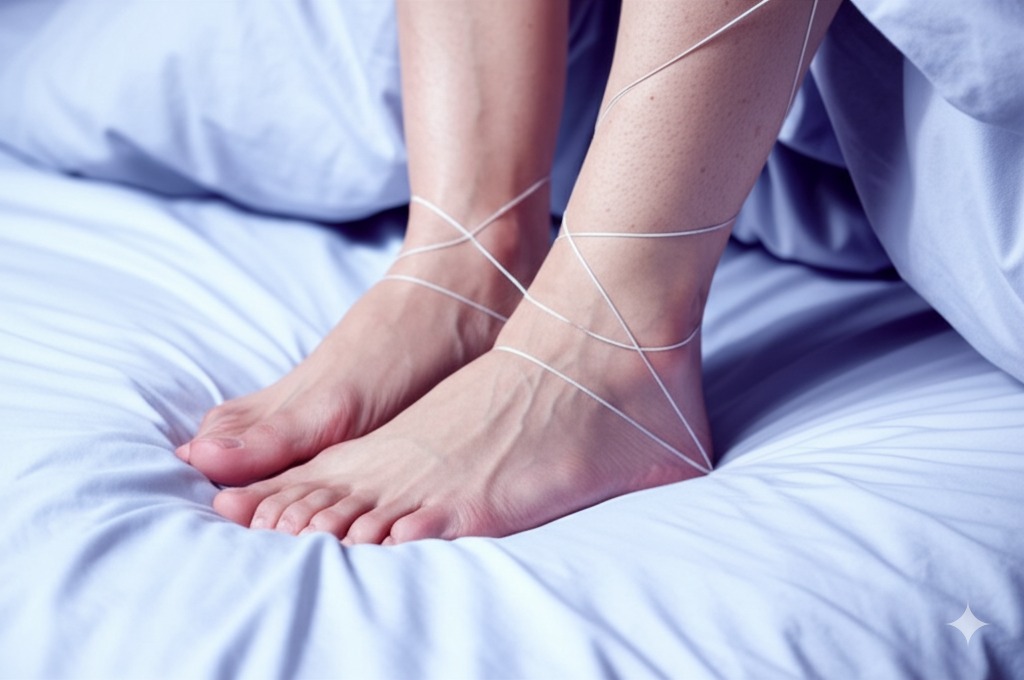Understanding Restless Legs Syndrome (RLS): Symptoms, Causes, and Management

Do you experience an irresistible urge to move your legs, often accompanied by uncomfortable sensations, especially when resting or trying to sleep? You might be dealing with Restless Legs Syndrome (RLS), also known as Willis-Ekbom disease. This neurological sensorimotor disorder can significantly disrupt sleep and impact quality of life.
What is Restless Legs Syndrome?
RLS is characterized by an overwhelming urge to move the legs, typically triggered by rest, relaxation, or inactivity. The sensations are often described as crawling, creeping, pulling, throbbing, aching, itching, or electric feelings deep within the legs (usually below the knees). Moving the legs temporarily relieves the discomfort.
Key diagnostic criteria (often remembered by the acronym URGE):
- Urge to move the legs, usually accompanied by uncomfortable sensations.
- Rest or inactivity triggers or worsens symptoms.
- Getting up and moving provides temporary relief.
- Evening or night onset or worsening of symptoms.
While primarily affecting the legs, RLS sensations can sometimes occur in the arms, torso, or other body parts. Many people with RLS also experience periodic limb movements of sleep (PLMS) – involuntary jerking or twitching of the legs during sleep.
Causes and Risk Factors
The exact cause of primary RLS (not linked to another condition) is often unknown, but it's thought to involve dysfunction in the brain's basal ganglia circuits that use the neurotransmitter dopamine, which is needed to produce smooth, purposeful muscle activity and movement. There's often a genetic component.
Secondary RLS can be associated with or triggered by:
- Iron deficiency (even without anemia)
- Kidney failure (uremia)
- Pregnancy (especially the last trimester)
- Neuropathy (nerve damage)
- Certain medications (antidepressants, antipsychotics, anti-nausea drugs, some cold/allergy meds)
- Withdrawal from certain substances
- Other medical conditions (e.g., Parkinson's disease, rheumatoid arthritis)
Managing RLS Symptoms
Management focuses on relieving symptoms and addressing any underlying causes. Strategies include lifestyle changes, therapies, and medications:
Lifestyle Modifications:
- Regular, moderate exercise (avoid intense exercise close to bedtime).
- Establishing good sleep hygiene practices.
- Leg massages, warm baths, or heating/cooling pads.
- Avoiding caffeine, alcohol, and tobacco, especially in the evening.
- Stretching exercises for the legs.
- Mentally engaging activities during periods of rest (e.g., reading, puzzles).
Addressing Underlying Conditions:
- Iron supplementation if deficiency is identified (consult doctor first).
- Managing kidney disease or other associated conditions.
- Reviewing and potentially changing medications known to trigger RLS (with doctor's guidance).
Medications (Prescribed by Doctor):
- Dopaminergic agents (increase dopamine levels).
- Alpha-2-delta ligands (e.g., gabapentin, pregabalin).
- Opioids (usually reserved for severe, refractory cases).
- Benzodiazepines (can help with sleep but don't directly treat RLS sensations).
Consult a Healthcare Professional
If you suspect you have RLS, it's important to see a doctor for proper diagnosis and to rule out or treat any underlying conditions. Self-treating, especially with supplements like iron, can be harmful if not needed.
Restless Legs Syndrome can be a frustrating condition, significantly impacting sleep and daily life. Understanding the symptoms, potential triggers, and available management strategies, in consultation with your doctor, can help you find relief and improve your quality of rest.



